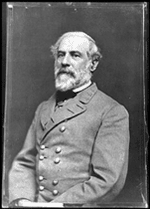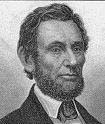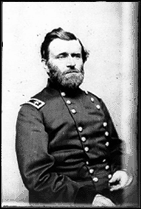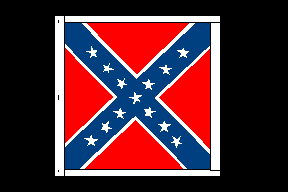The Battle of Gettysburg:
From Start to Finish |
|
|
| Can you imagine what
it would have been like for the soldiers at the Battle of Gettysburg? Watching
friends and acquaintances die before you without being able to do anything.
Killing others for what some thought was a stupid reason, and knowing deep
down inside of you that they were right, that you didnít need to kill.
This issue of slavery couldnít be settled over a cup of tea, but maybe
with a little compromise and maturity this could be settled without death.
However, to follow our countries Declaration of Independence, we
would have to ban slavery altogether. However this would not work. |
|
| Try to imagine this.
On your left side is a confederate flag. The flag flown to represent the
rebellious soldiers that fought not only for their beliefs, but more importantly
a way of life. Then to your right you see a Union flag. This flag is flown
to represent our nation, its true being. This flag flies to show the Unity
of our land and to represent each state even the ones that threaten to
succeed, and rebel against the nation. |
|
|
| Hearing tortured
cries you turn to see a man fighting for his life. His killer turns and
he is weeping. He is weeping because the life he just took was his brothers.
The other cries you hear tell you that this war is gruesome and should
be stopped. Wounded soldiers scream for help, but there is none to be given.
Those still fighting look in horror at the mangled bodies and pray that
they donít end up like this. Not knowing that over 51,000 of the 158,300
will die. |
|
| Then the aftermath
of the battle came. Bodies were piled up, with no idea what should be done
with them. The bodies started to spread diseases, and citizens of Gettysburg
had to cope with great loses of life. |
|
| The main cause for
this battle was General Robert E. Leeís idea for an offensive attack on
the Union army. Before this move they had been protecting their capital
at Richmond. Attack after attack was thrown upon these soldiers in hopes
to defeat the Confederates by taking Richmond. Lee decided to focus his
armyís full strength on General George G. Meadeís army of the Potomac.On
July 1, 1863, Lee started his attack. The plan was to come on the north
and west sides of Meadeís army. Meadeís army held its ground for some time.
They were then forced to retreat to Cemetery Hill. |
|
| The third day was
more of a Union victory. The confederates had no good come with their attempts,
in the morning the confederates were forced from their last toehold at
Culpís Hill. Then in the early afternoon the confederates started a preliminary
artillery bombardment. Lee ordered attacks on the Unionís center on Cemetery
Ridge. Lee also ordered General George E. Pickett to charge their line.
Pickettís attack, now called Pickettís Charge, was momentarily helpful,
but was driven back with severe causalities. General J.E.B. Stuartís cavalry
was also unsuccessful on their rear attack. |
|
| On July fourth Lee
started to withdraw his men. The army then headed to Williamsport on the
Potomac River. His trail of soldiers stretched for 14 miles. |
|
| Following the war
the government made a national monument was made for the fallen soldiers.
On November 19, 1863 a ceremony was held to dedicate this cemetery. The
main speaker would be orator Edward Everett. Everett was known for his
great speeches and his background as President of Harvard and as ambassador
to Great Britain. The people debated over inviting the president, and decided
to. They asked him to keep his speech short and to only cover the topic
of the ceremony. At the ceremony Everett gave a speech that lasted nearly
two hours. Lincoln kept his short and to the point, his speech lasted for
a little over two minutes. After he was done with his speech Lincoln was
bewildered to see that no one applauded or even said anything, because
they were speechless. He did not understand this for sometime. The speech
he gave that day is now called The Gettysburg Address. |
|
BIBLIOGRAPHY
Dr. Hoemann, George H. "The American Civil
War Homepage", American Civil War Homepage <http://sunsite.utk.edu/civil-war/warweb.html>
Updated 10/27/00
Williams, Brian "Military History Online",
Military
History Online <http://www.militaryhistoryonline.com>
Updated 10/30/00
"The History Place", The History Place <http://www.historyplace.com>
Update Unknown
Aaron Church
Grade 8
2000-2001
|
 General Robert E. Lee
General Robert E. Lee



